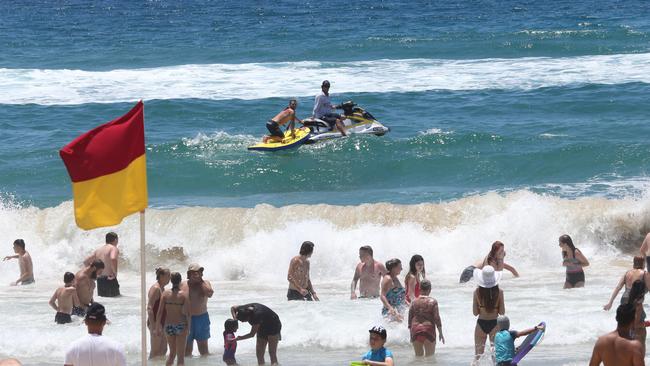Summer in Australia often means beach trips, yet rips remain a misunderstood hazard for many beachgoers. Professor Rob Brander, known as “Dr. Rip” and a surf scientist at UNSW Sydney, challenges conventional wisdom about rip currents. According to Dr. Brander, traditional advice on escaping rips may not be as effective as commonly believed, urging swimmers to rethink their approach to beach safety.
The advice to “swim between the flags” has undoubtedly saved lives. However, last summer alone saw 54 coastal drownings in Australia within just 90 days, all occurring at unpatrolled beaches. Many of these tragedies involved rips, which claim more lives annually in Australia than natural disasters like bushfires and floods combined.
Dr. Brander’s message is clear: “If you’re alone on a beach with no lifeguards and little swimming experience, don’t risk entering the water.” Rips can appear deceptively calm and are often mistaken for safe swimming spots due to their deep, greenish appearance.
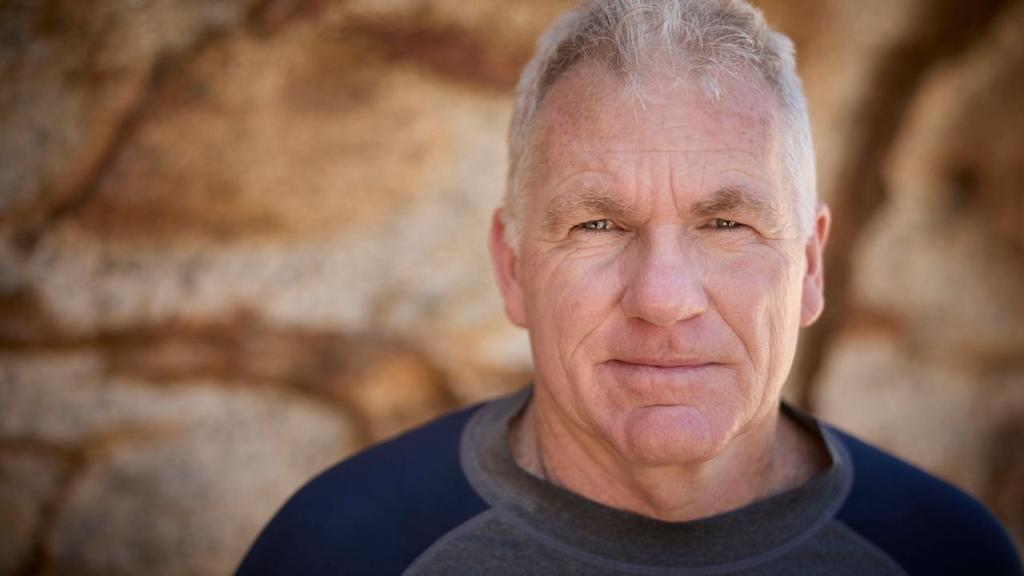
How to Spot a Rip
Understanding the types of rips can help beachgoers stay safe. Here are three common types to be aware of:
Channelised Rips: The most common and easiest to spot, channelised rips appear as dark, calm gaps between areas of whitewater. These rips stay in the same location for days or even weeks, making them more predictable.
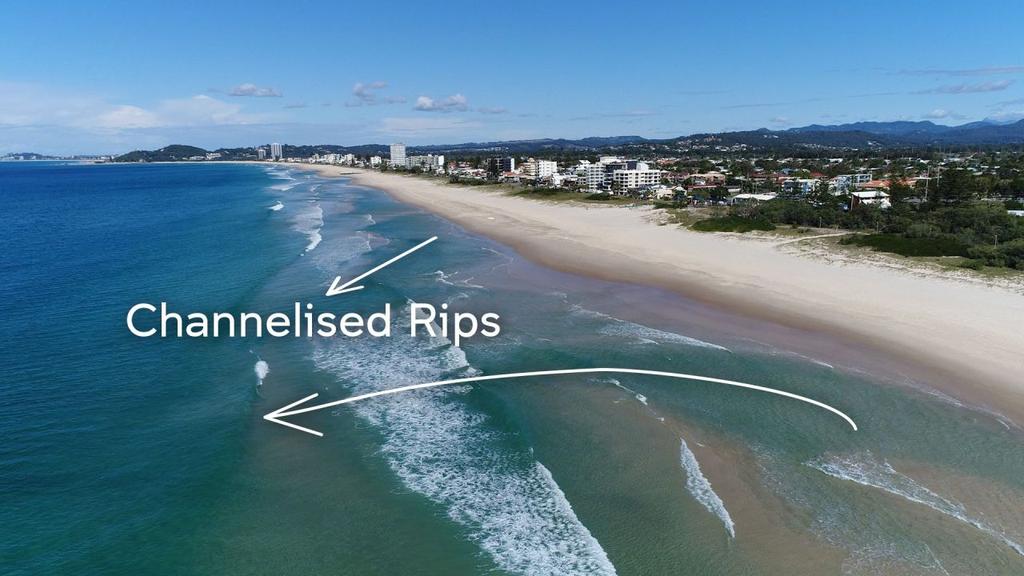
Boundary Rips: Found near headlands, jetties, and rocks, boundary rips often appear close to man-made or natural structures. While these rips are useful to surfers for getting out past waves, swimmers can easily get pulled out by them.
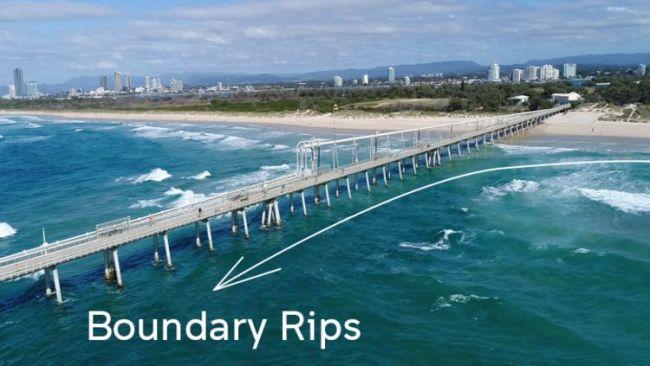
Flash Rips: The most unpredictable type, flash rips form quickly due to sudden, large waves and dissipate just as fast. Unlike channelised rips, they can appear in shallow areas and make it difficult for swimmers to react in time.
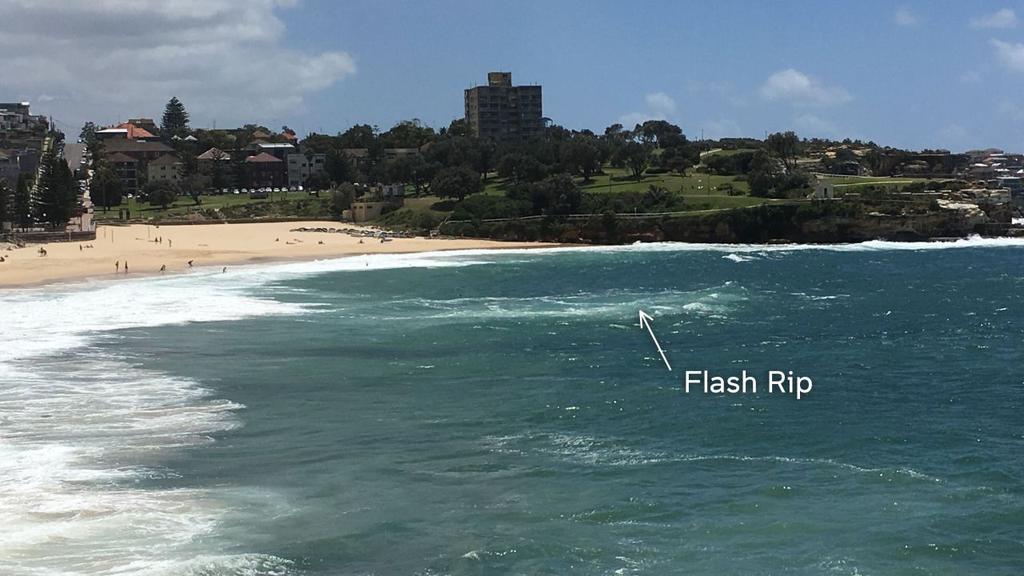
The mantra “white is nice, green is mean” serves as a helpful reminder: whitewater indicates shallower, safer areas, while dark green waters may signify deeper, rip-filled sections.
Caught in a Rip? Here’s What to Do
Dr. Brander advises that once caught in a rip, panic is your worst enemy. Here are his tips to stay safe:
- Relax: Avoid panicking. Rips don’t pull swimmers underwater—they carry them away from shore. Staying calm helps conserve energy.
- Don’t Swim Against It: Swimming back to shore is ineffective and exhausting. Instead, float and let the rip carry you out; it will eventually weaken beyond the breaking waves.
- Float: Floating conserves energy and increases your visibility, making it easier for rescuers to spot you.
- Signal for Help: Raise your arm or call for help. Surfers and lifeguards often assist swimmers caught in rips, so attracting their attention is critical.
- If Alone: For strong swimmers, trying to escape by swimming parallel to the beach might work. Otherwise, stay calm, float, and look for breaking waves to guide you back to shore.
Rescuing Others from a Rip: Think Before You Act
Rescuing someone caught in a rip can be equally dangerous. According to Dr. Brander, rushing into the water is often a fatal mistake. If you see someone in distress, call for help first, and, if possible, find a flotation device. Swimming out without conserving energy increases the risk to both rescuer and swimmer.
Final Thoughts: If in Doubt, Don’t Go Out
Dr. Brander’s advice is simple but vital: “If in doubt, don’t go out.” Understanding the nature of rips and knowing how to respond if caught can make a world of difference. For beach lovers and summer travelers, a little knowledge can be the best safeguard against these silent and often misunderstood hazards.
Staying safe at the beach this summer means respecting the power of the ocean, watching for signs of danger, and always swimming near lifeguards when possible.
𝐒𝐮𝐛𝐬𝐜𝐫𝐢𝐛𝐞, 𝐥𝐢𝐤𝐞, 𝐬𝐡𝐚𝐫𝐞, 𝐚𝐧𝐝 𝐜𝐨𝐦𝐦𝐞𝐧𝐭 𝐭𝐨 𝐬𝐭𝐚𝐲 𝐭𝐮𝐧𝐞𝐝 𝐭𝐨 𝐲𝐨𝐮𝐫 𝐟𝐚𝐯𝐨𝐫𝐢𝐭𝐞 𝐧𝐞𝐰𝐬 𝐜𝐡𝐚𝐧𝐧𝐞𝐥!
📌YouTube- https://www.youtube.com/@serendibnews
📌Facebook – https://web.facebook.com/serendibnews.com.au/
📌Instagram – https://www.instagram.com/serendibnewsau
📌TikTok – https://www.tiktok.com/@serendibnews
📌Twitter- https://x.com/SerendibNewsAu
📌LinkedIn- https://www.linkedin.com/in/serendib-news-au/
📌WhatsApp Group – https://tinyurl.com/2as67j52
📌WhatsApp Channel – https://tinyurl.com/bdf8f2jr


